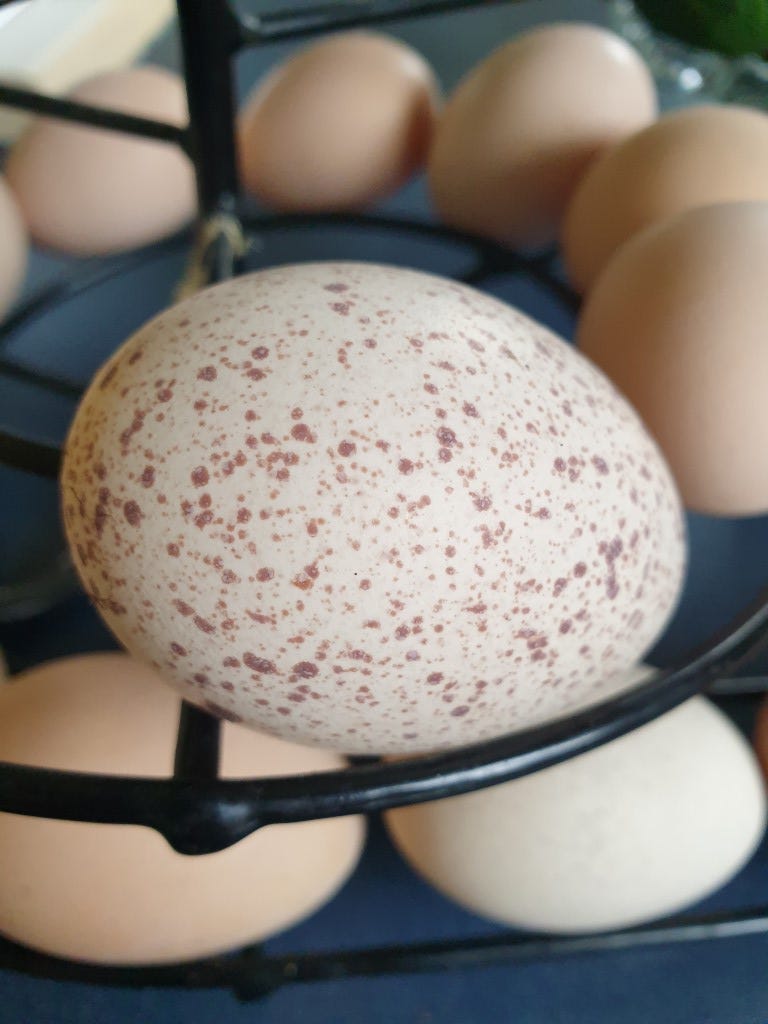Mating occurs typically in the spring and will last until late summer. Hens will have two nesting sessions during the season and they will sit on their eggs for 28 days. They generally lay 16 eggs or so each session.
Pictured below is a turkey egg amongst chicken eggs. Turkey eggs are larger, have much harder shells, the yolk is larger compared to the white and the shells are speckled with brown dots.
Hens automatically sit down when they wish to be mated and they will leave the flock to go away and nest and raise their young.
Pictured below are a series of turkeys on their nests, with the bottom right being a new nest containing four eggs.
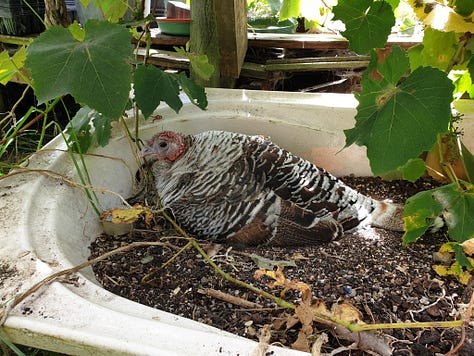
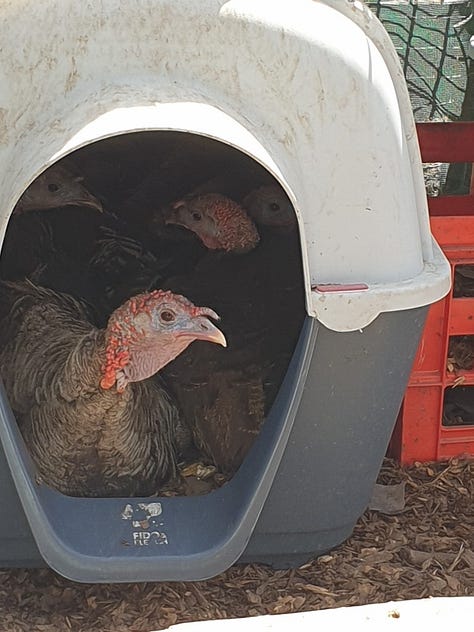
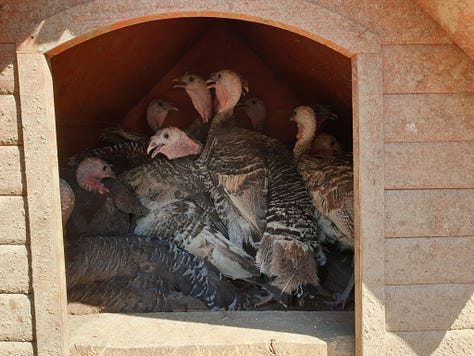
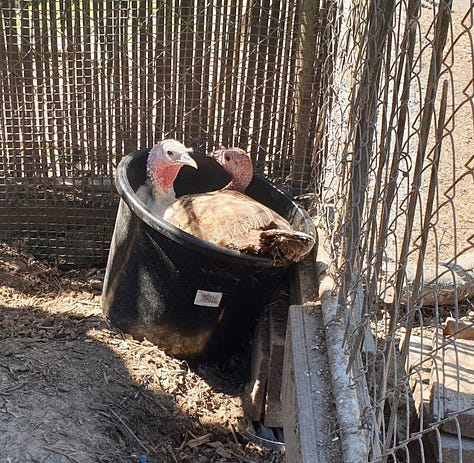


Hens will share nests, as you can see from the above photos, and they will co-parent with other hens.
Once the chicks are around 1-2 weeks of age, the mother will want to get them off the ground and up onto a fence of low branch to keep them safe. The chicks will line up along the branch or perch and she will allow her wings to fully extend and lie over the top of her brood keeping them warm and dry.
Picture below: A turkey mama with her babies.
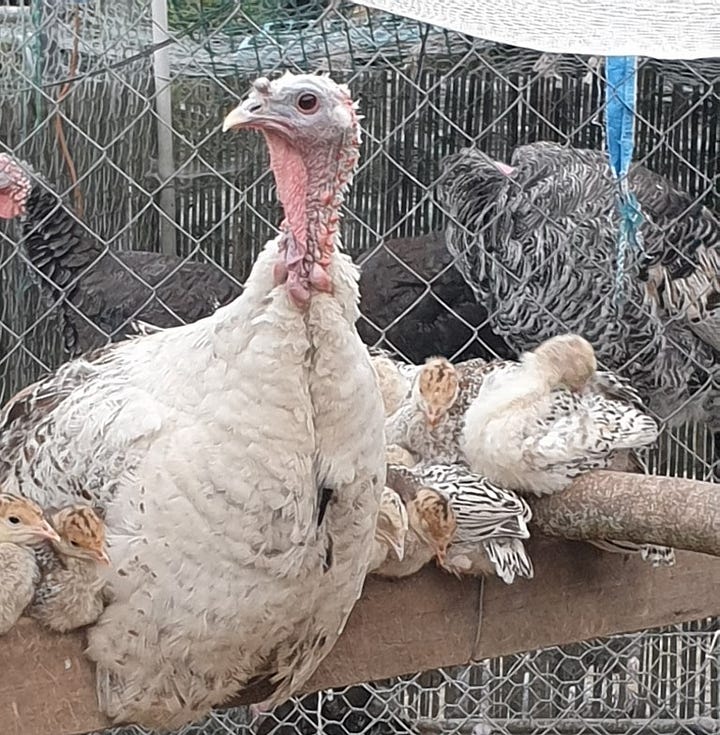
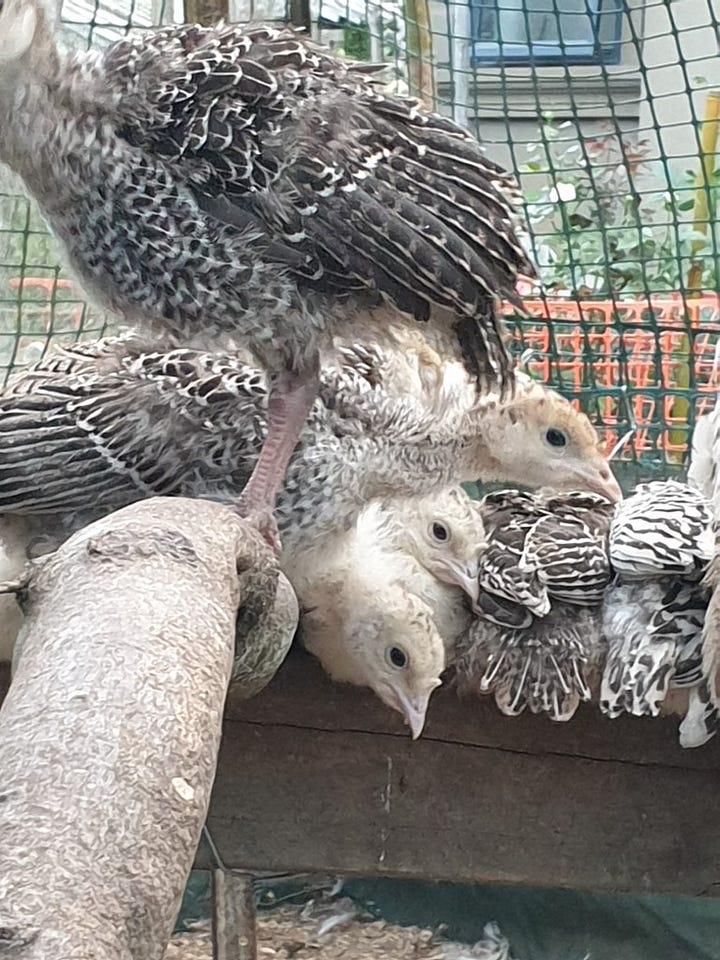


Chicks will keep their “tiger heads” until around 4-6 weeks of age when they will lose the down on their heads and it will either be replaced with small feathers for hens or left bald for toms (males).
Pictured below: week-old chicks with their ‘tiger heads’ (left photo) and 3-4 week old chicks still with their ‘tiger heads’ intact (right photo).
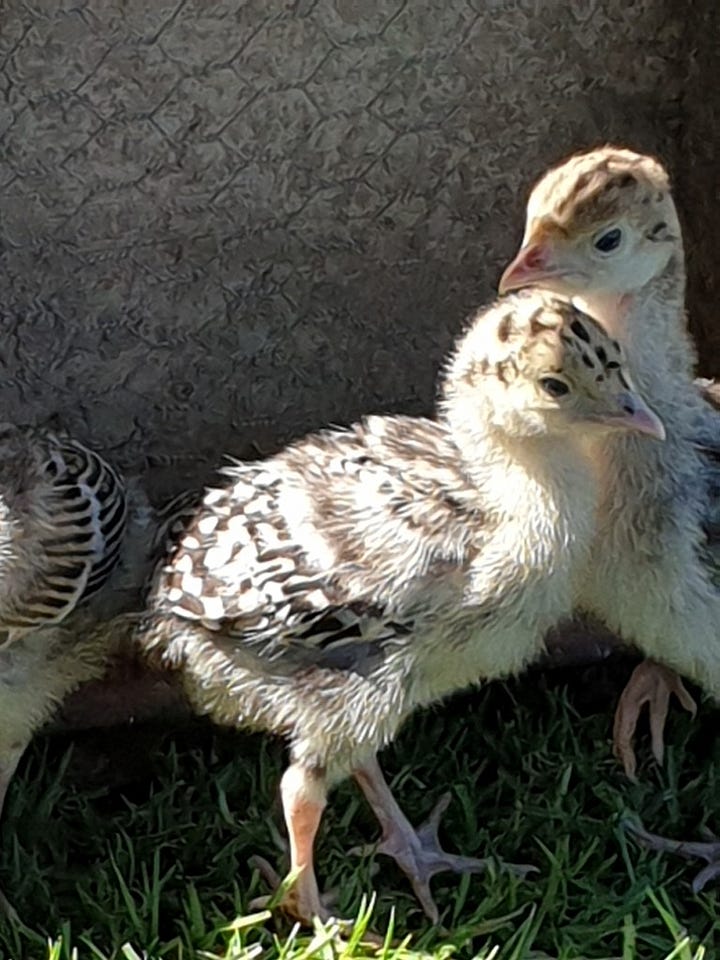
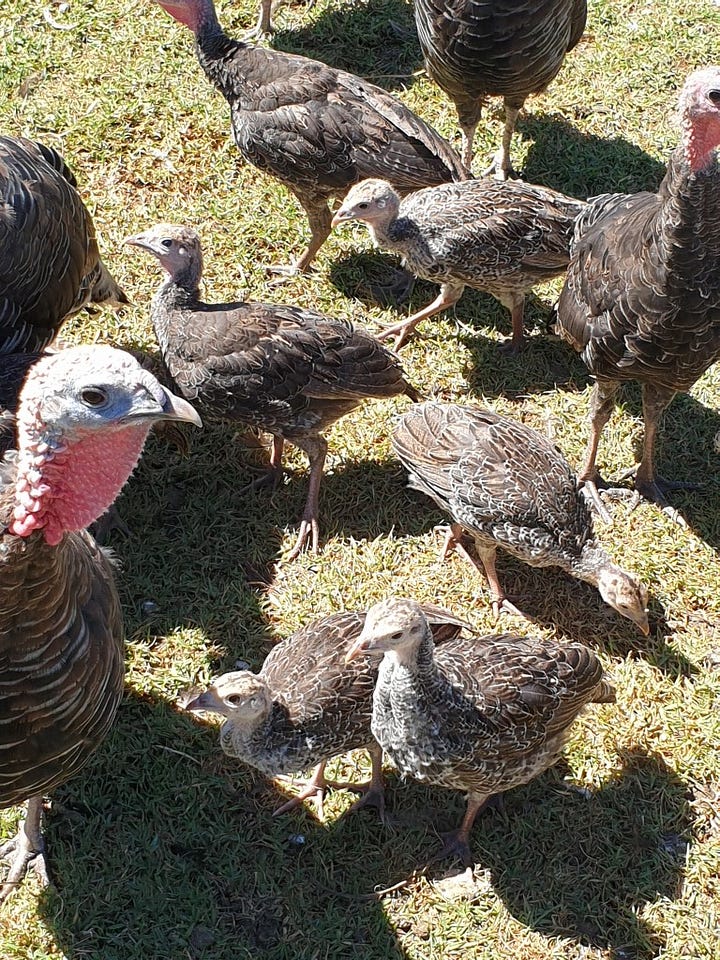
Chicks are considered to be poults at around six weeks of age, that is generally when they are taken off chick food and hens will reach full size at around six months of age, although won’t reach maturity until around eight months of age. At maturity a hens head will turn blue. Males are not fully grown until around 8-10 months of age and their heads will change from being smooth to wrinkly.
The above video shows lots of babies of all sizes arriving for their breakfast.



